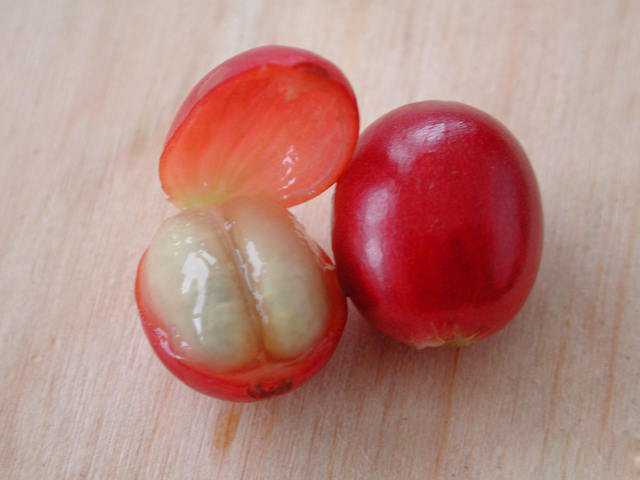The importance of cultivating beans after roasting Coffee Powder Fine Coffee beans
Each coffee bean contains about 200000 individual cells, each of which operates like a tiny pressure vessel, like a small reaction device. In the early stage of roasting, the moisture in the raw beans dissipates quickly, and the living water in the coffee begins to evaporate. With the increase of the temperature of coffee beans, the evaporation of water will put pressure on the cell wall. in this process, the element of water plays a leading role, and there is a series of very interesting reactions with the oil in the coffee. As the pressure increases, the cell wall begins to expand. The evaporation of water causes the cell wall to slowly harden. As the roasting process continues down, the pressure inside the beans increases, and the coffee oil is brought into the tiny pores in the cell wall, creating a sealing effect that retains carbon dioxide, other aromas and coffee aromas.
What does this have to do with packing? This important question requires a glimpse into the mysteries of the cell wall structure in coffee beans. The cell walls in coffee beans are only about 5 microns thick, and they can withstand the pressure of 140psi (pounds per square inch), which mainly comes from carbon dioxide produced during the second half of the baking process. Finally, a few days after the baking cycle, the so-called gas release process begins, and carbon dioxide begins to dissipate from the coffee beans.
The exhaust process of coffee beans is much longer than that of coffee powder after grinding, and the exhaust phenomenon of coffee beans will also shorten the life of coffee beans. In the early exhaust process, the air will replace the escaped carbon dioxide at about 1:1, and the air contains about 21% oxygen, so the air absorption will quickly oxidize the coffee, the coffee will continue to exhaust, the internal pressure of the coffee beans will decrease, and the exhaust speed will begin to slow down. Over time, 12-ounce bags of baked beans release more than half a cubic foot of carbon dioxide.
What about the impact on the development of taste? Experiments have shown that the taste of coffee beans changes more in the first five days than in the next five days, mainly because exhaust is the most active during the first five days of baking.

Important Notice :
前街咖啡 FrontStreet Coffee has moved to new addredd:
FrontStreet Coffee Address: 315,Donghua East Road,GuangZhou
Tel:020 38364473
- Prev

Fresh Coffee Beans Coffee Roasting Curves with Coffee Flavors Boutique Coffee Beans
1. The air inside this crack has a different thermal conductivity than the beans outside. If it causes the two temperatures to be different. Most likely the problem lies in the fact that the air is much warmer than the beans. For example, it's too hot to get out of the oven, or the beans aren't dry enough. You'll see that the middle is more burnt than the sides. Generally, after burning, the explosion will be a little faster, perhaps not dense. At this point, it's possible that some of the beans
- Next

The use of coffee utensils smart cups is convenient to drink coffee quickly and high-quality coffee beans
The steps of making coffee in smart cup are shown in the list. Here, we should explain to the students what we should pay attention to when using smart cup to make coffee: 1. Be sure to grind and drink now. Try not to buy coffee powder directly, but to buy freshly roasted coffee beans. Because the flavor and charming taste of the coffee will soon change or even disappear after it is ground. 2. Make your own coffee. Coffee
Related
- Beginners will see the "Coffee pull flower" guide!
- What is the difference between ice blog purified milk and ordinary milk coffee?
- Why is the Philippines the largest producer of crops in Liberia?
- For coffee extraction, should the fine powder be retained?
- How does extracted espresso fill pressed powder? How much strength does it take to press the powder?
- How to make jasmine cold extract coffee? Is the jasmine + latte good?
- Will this little toy really make the coffee taste better? How does Lily Drip affect coffee extraction?
- Will the action of slapping the filter cup also affect coffee extraction?
- What's the difference between powder-to-water ratio and powder-to-liquid ratio?
- What is the Ethiopian local species? What does it have to do with Heirloom native species?

